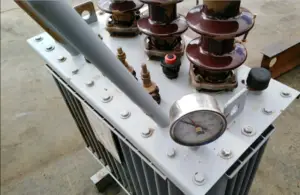Transformers play a crucial role in power systems by stepping up or down voltage levels. However, when a transformer operates at high temperatures, it can cause severe consequences, including equipment damage, power outages, and even explosions.
In this article, we will explore the various consequences of a transformer running too hot.
Table of Contents
Consequences of a Transformer Running Too Hot
- Equipment Damage Transformers generate heat during their operation, and it is essential to ensure that the temperature is within safe limits. If the temperature exceeds the maximum temperature rating, the transformer’s internal insulation can break down, leading to damage to the transformer’s windings, core, or other components. Additionally, the oil in the transformer can break down, leading to transformer failure. Equipment damage due to overheating can be costly to repair or replace, leading to significant downtime and financial loss.
- Reduced Lifespan A transformer that operates at high temperatures will experience reduced lifespan due to accelerated aging of its components. The high temperature causes the insulation materials to degrade faster, leading to reduced insulation resistance, and ultimately, transformer failure. The transformer’s reduced lifespan will lead to premature replacement, which can be costly.
- Fire Hazard Overheating of a transformer can create a fire hazard. The excessive heat generated by the transformer can cause a fire to break out, which can spread to other equipment and structures, leading to catastrophic consequences. The fire can also release harmful gases, leading to significant health hazards.
- Power Outages When a transformer overheats, it may trip or fail, causing power outages. Power outages can affect homes, businesses, hospitals, and other critical facilities. In some cases, power outages can lead to financial losses, production downtime, or even loss of life.
- Explosion In severe cases, a transformer that overheats can explode, leading to catastrophic consequences. The explosion can release harmful gases and debris, which can cause injuries or fatalities. The explosion can also damage nearby equipment and structures, leading to significant financial losses.
How to Diagnose Transformer Overheating?
Diagnosing transformer overheating is crucial in preventing the consequences discussed above. Here are some steps to follow when diagnosing transformer overheating.
- Check the Temperature The temperature of a transformer is a critical parameter to monitor. Using a temperature sensor, you can measure the temperature of the transformer’s oil or windings. If the temperature is higher than the maximum temperature rating, the transformer is overheating.
- Check the Oil Level Low oil level can cause overheating of the transformer. Check the oil level and refill if necessary.
- Check for Load Imbalance A load imbalance can cause one phase of the transformer to overheat. Check the load on each phase and ensure it is balanced.
- Check the Cooling System A malfunctioning cooling system can cause the transformer to overheat. Check the cooling system, including fans, pumps, and heat exchangers, and repair or replace any faulty components.
How to Prevent Transformer Failure Due to Overheating?
Preventing transformer failure due to overheating is crucial in ensuring the reliable operation of power systems. Here are some measures to prevent transformer failure due to overheating.
- Regular Maintenance Regular maintenance is essential in preventing transformer failure due to overheating. Schedule regular inspections and maintenance to ensure the transformer is operating within safe limits.
- Monitor Temperature Monitor the temperature of the transformer using a temperature sensor. Ensure the temperature is within safe limits and take corrective action if the temperature exceeds the maximum temperature rating.
- Ensure Proper Ventilation Proper ventilation is critical in dissipating heat generated by the transformer. Ensure the transformer is installed in an area with adequate ventilation and airflow.
- Load Balancing Load balancing is crucial in preventing transformer failure
due to overheating. Ensure the load on each phase of the transformer is balanced to prevent overheating of individual phases.
- Upgrade Cooling System Upgrading the cooling system of the transformer can increase its capacity to dissipate heat, reducing the risk of overheating. Consider upgrading the cooling system if the transformer operates at high ambient temperatures or has a high load.
How to Troubleshoot a Hot Transformer?
Troubleshooting a hot transformer is essential in preventing the consequences discussed above. Here are some steps to follow when troubleshooting a hot transformer.
- Check the Load Check the load on the transformer and ensure it is within the rated capacity. Overloading the transformer can cause overheating.
- Check the Cooling System Check the cooling system, including fans, pumps, and heat exchangers, and ensure they are functioning correctly.
- Check the Oil Level Check the oil level of the transformer and ensure it is within the recommended range. Low oil level can cause overheating.
- Check for Load Imbalance Check the load on each phase of the transformer and ensure it is balanced. Load imbalance can cause overheating of individual phases.
- Check for Faulty Components Check for faulty components, such as damaged insulation, loose connections, or short circuits. These can cause overheating of the transformer.
Conclusion
A transformer running too hot can have severe consequences, including equipment damage, reduced lifespan, fire hazard, power outages, and even explosions.
It is essential to diagnose and prevent transformer overheating through regular maintenance, monitoring temperature, ensuring proper ventilation, load balancing, and upgrading the cooling system.
Troubleshooting a hot transformer involves checking the load, cooling system, oil level, load balance, and faulty components.
By taking these measures, we can ensure the reliable operation of power systems and prevent catastrophic consequences.



